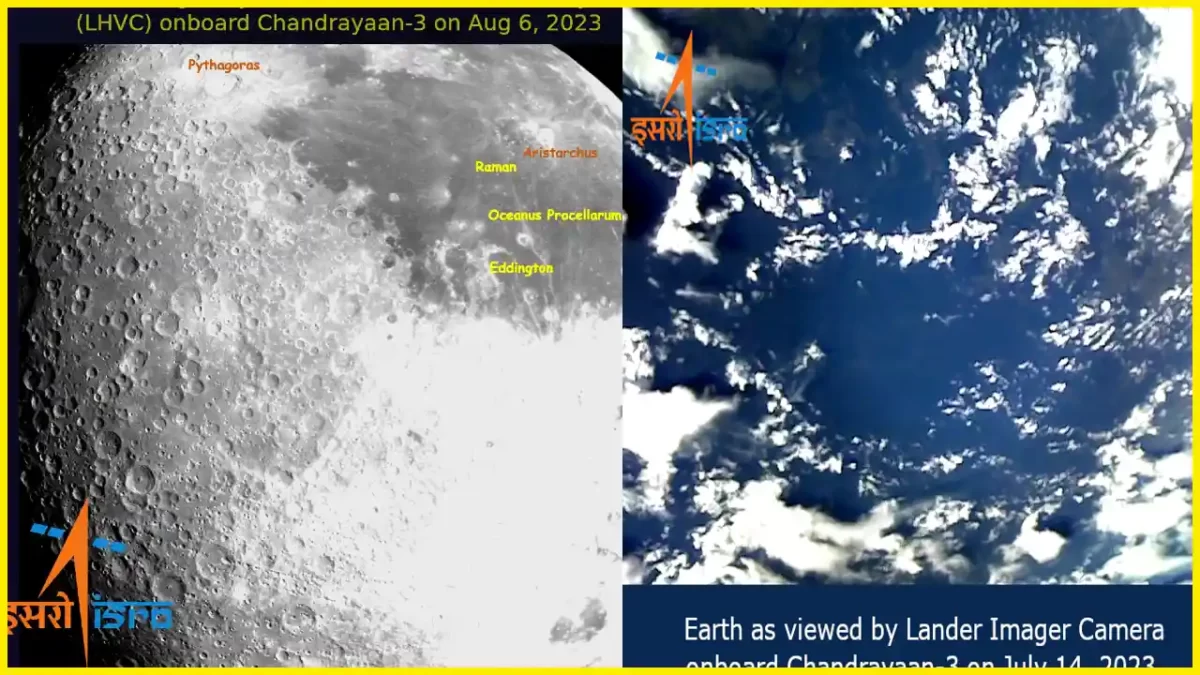The Indian Space Research Organisation (ISRO) has released two new images taken by the Chandrayaan-3 spacecraft. The first image shows Earth as viewed by the Lander Imager (LI) Camera, while the second image shows the Moon as viewed by the Lander Horizontal Velocity Camera (LHVC).
The LI Camera image was taken on July 14, 2023, the day of the Chandrayaan-3 launch. It shows a stunning view of Earth, with the continents, oceans, and clouds clearly visible. The LHVC image was taken on August 6, 2023, a day after the Chandrayaan-3 spacecraft entered lunar orbit. It shows a close-up view of the Moon’s surface, with craters, mountains, and valleys visible.
These images are the first to be taken by the Chandrayaan-3 spacecraft, and they are a significant milestone in the mission. They demonstrate that the spacecraft is in good health and that its cameras are working properly. The images are also a valuable resource for scientists, who can use them to study the Earth and Moon in more detail.
The Chandrayaan-3 mission is the third lunar mission by ISRO. It aims to land a lander and rover on the Moon’s South Pole. The lander will carry a number of scientific instruments, including a spectrometer, a camera, and a magnetometer. The rover will be used to explore the lunar surface and collect samples.
The Chandrayaan-3 mission is scheduled to land on the Moon in September 2023. The ISRO is confident that the mission will be a success, and that it will help to further our understanding of the Moon.
In addition to the images of Earth and Moon, the Chandrayaan-3 spacecraft has also sent back data on the lunar environment. This data includes information on the lunar surface composition, the lunar atmosphere, and the lunar radiation environment. This data will be used to help plan future lunar missions.
The Chandrayaan-3 mission is a major achievement for ISRO, and it is a significant step forward in India’s space program. The mission has the potential to make major scientific discoveries, and it will help to pave the way for future human exploration of the Moon.

